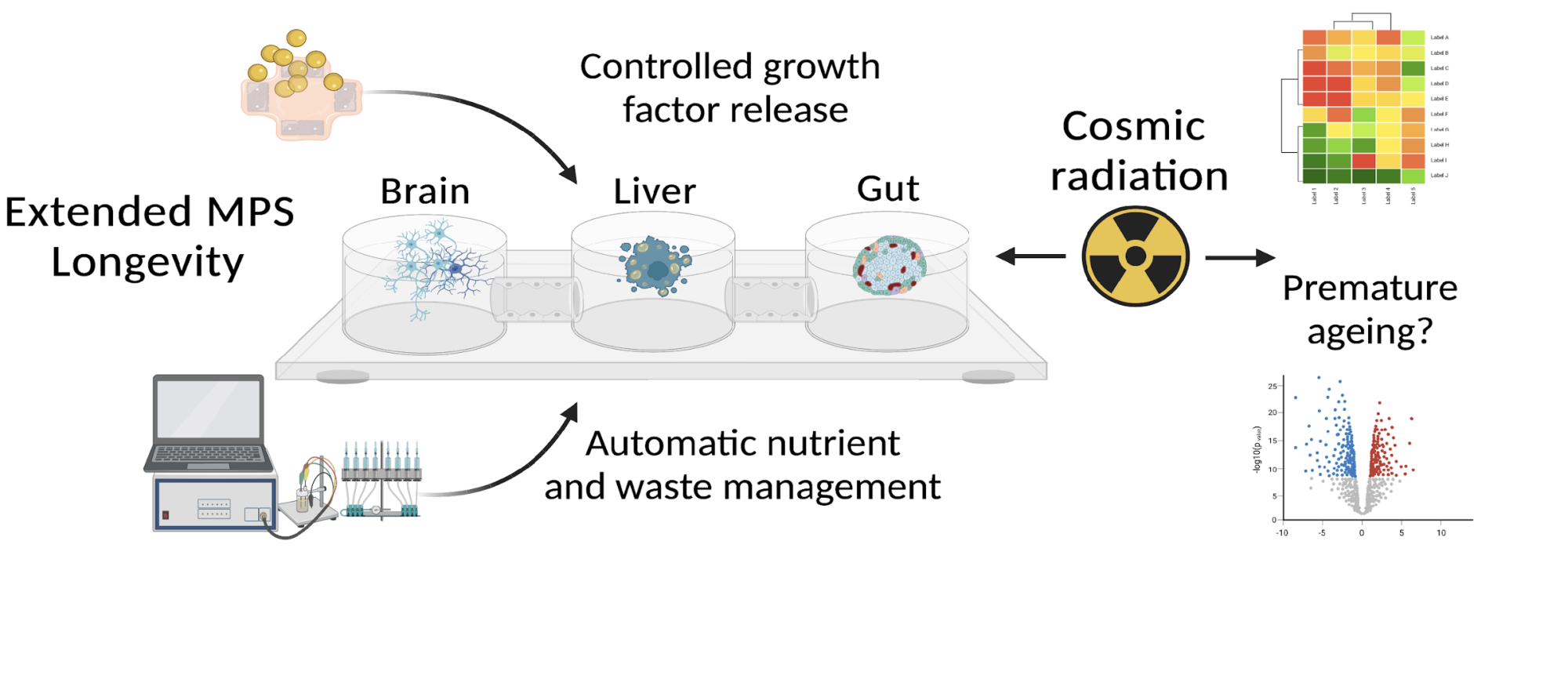
Multiple aging hallmarks, such as stem and progenitor cell senescence, mitochondrial and immune dysfunction, and systemic inflammation, have been observed during spaceflight exposure. Our previous spaceflight and simulated spaceflight/deep space radiation studies have demonstrated a significant increase in oxidative stress, disrupted fatty acid metabolism and lipid accumulation in the liver; increased oxidative stress and neuro-inflammation in the brain, and oxidative stress and inflammation in the gut. Thus, it is paramount to identify the mechanisms leading to these shared impairments in the brain-liver-gut axis in preparation for long-term space travel. This proposal therefore aims to interrogate the effects of spaceflight on cell and tissue dysfunction along the brain-liver-gut axis and to determine the role of these perturbations in accelerating tissue degeneration associated with aging.
The first part of this project is focused on addressing current limitations to the longevity of brain, liver and gut MPSs using novel biomaterials and bioengineering principles in combination with embedded growth factors to mimic the mechanical environment and growth factor/small molecule gradients observed in vivo during development. Then in the second part of this project, we will examine the role of chronic inflammation, spaceflight and aging on the brain, liver and gut using both individual MPSs of the brain liver and gut and an interconnected multiorgan MPS assessing crosstalk along the brain-liver-gut axis. We are specifically focusing on cellular senescence and mitochondrial dysfunction in conjunction with dysregulation of lipid metabolism. Finally, we will assess the specific role of radiation induced inflammation on premature aging across multiple systems by challenging non-irradiated MOMPS with conditioned media and inflammatory cytokines from irradiated MOMPS.


